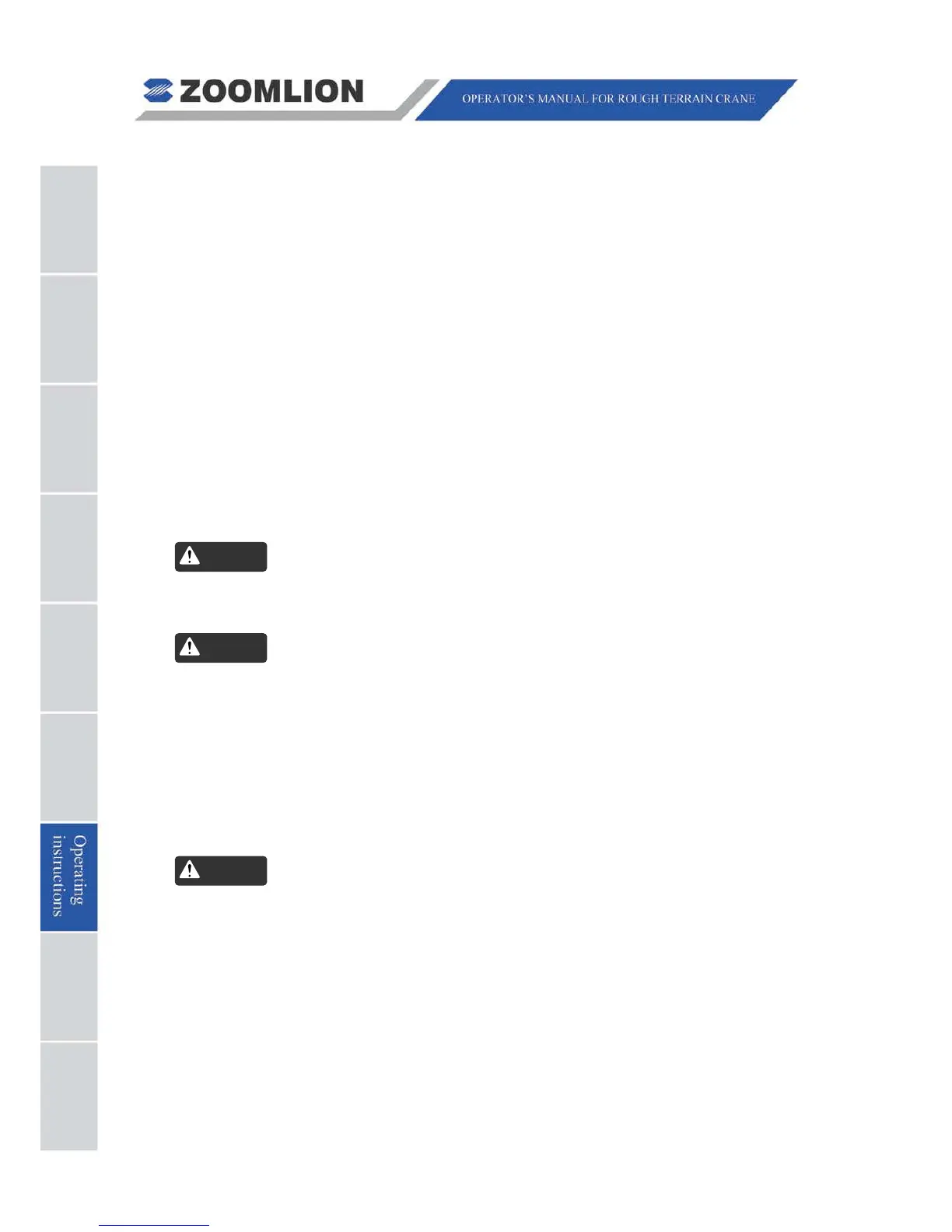07 - 48 RT60 Rough Terrain Crane
MOVING THE CRANE TO A JOB SITE
The procedure for moving a crane is as follows:
a) Start the engine;
b) Allow air pressure build-up;
c) Apply the swing lock;
d) Apply the service brake;
e) Release the parking brake;
f) Select the desired transmission range.
Good judgment in the selection of gear range and route of travel is essential when
operating off the road.
Though designed primarily for use in off-road conditions, there may be instances when
highway travel is necessary. In such instances, the crane is subject to the same
regulations which govern the operation of other heavy equipment on public roads.
Adequate lighting, flares, flags and safety equipment should be on the cranes at all times.
When operating on hard surfaces, use high range F1 thru F3 two-wheel drive only.
Failure to do so may result in severe drive line “wind-up” and component failure.
In addition to conditions of terrain, gear selection while traveling is also determined
by transmission temperature. Normal operating temperature is 51
℃ - 97℃. If the
transmission temperature rises above
121.1°C while traveling, the crane must be
stopped and allowed to cool. Shift to neutral and run the engine at 1000 - 1200 rpm.
The temperature should drop rapidly to the engine coolant temperature. If the
temperature does not drop, trouble is indicated, and should be determined before
moving again. Overheating generally occurs due to working in too high a gear ratio.
DO NOT SHUT OFF THE ENGINE WHEN THE TRANSMISSION IS OVERHEATING!
NEVER SHIFT BETWEEN FORWARD AND REVERSE WHILE THE CRANE IS IN
MOTION.
Full power shifts under load may be made without endangering the transmission or drive
components. However, downshifts should not be made when the vehicle speed exceeds
the maximum speed of the next lower range. Downshifting at excessive speeds will
overspeed the drive train components with possible resultant damage to the drive shafts.
Observe the restrictions given in the following chart during on-the-road operation.
Maximum permissible running intervals are given in terms of miles and hours of travel time.
Stop the crane when either limit has been reached (whichever comes first) and allow the
crane to cool for the period indicated.
